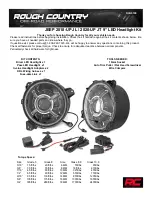
economical driving. A higher level indicates a
more economical driving style. If the three
outer areas are completely filled at the same
time, the driver has adopted the most eco-
nomical driving style for the selected settings
and prevailing conditions. The ECO display
border lights up.
The ECO display does not indicate the actual
fuel consumption. The additionally achieved
range displayed under
Bonus fr. start
Bonus fr. start
does
not indicate a fixed consumption reduction.
In addition to driving style, the actual con-
sumption is affected by other factors, such as:
R
load
R
tire pressure
R
cold start
R
choice of route
R
active electrical consumers
These factors are not included in the ECO dis-
play.
An economical driving style specially requires
driving at moderate engine speeds.
Achieving a higher value in the categories
"Acceleration" and "Constant":
R
observe the gearshift recommendations.
R
drive the vehicle in drive program C or E.
In urban traffic and stop-start traffic, drive pro-
gram C is recommended.
On long journeys at a constant speed, e.g. on
the highway, only the outer area for "constant"
will change.
The ECO display summarizes the driving style
from the start of the journey to its completion.
Therefore, there are more marked changes in
the outer areas at the start of a journey. On
longer journeys, there are fewer changes. For
more marked changes, perform a manual rest
(
Y
page 194).
Further information on the ECO display
(
Y
page 193).
Braking
Important safety notes
G
WARNING
If you shift down on a slippery road surface
in an attempt to increase the engine's brak-
ing effect, the drive wheels could lose their
grip. There is an increased danger of skid-
ding and accidents.
Do not shift down for additional engine brak-
ing on a slippery road surface.
Downhill gradients
!
On long, steep gradients, you must reduce
the load on the brakes. To use engine brak-
ing, shift to a lower gear in good time. This
helps you to avoid overheating the brakes
and wearing them out excessively.
When making use of the engine braking
effect, it is possible that a drive wheel may
not turn for some time, e.g. in the case of
suddenly changing or slippery road surface
conditions. This could cause damage to the
drive train. This type of damage is not cov-
ered by the Mercedes-Benz warranty.
Change into a lower gear in good time on long
and steep downhill gradients. This is especially
important if the vehicle is laden.
This also applies if you have activated cruise
control or Active Distance Assist DISTRONIC.
Heavy and light loads
G
WARNING
If you rest your foot on the brake pedal
while driving, the braking system can over-
heat. This increases the stopping distance
and can even cause the braking system to
fail. There is a risk of an accident.
Never use the brake pedal as a footrest.
Never depress the brake pedal and the
accelerator pedal at the same time.
!
Depressing the brake pedal constantly
results in excessive and premature wear to
the brake pads.
If the brakes have been subjected to a heavy
load, do not stop the vehicle immediately, but
drive on for a short while. This allows the air-
flow to cool the brakes more quickly.
Wet roads
If you have driven for a long time in heavy rain
without braking, there may be a delayed reac-
tion from the brakes when braking for the first
Driving tips
151
Driving
and
par
king
Z
Summary of Contents for SL 450 2019
Page 330: ...328...
















































